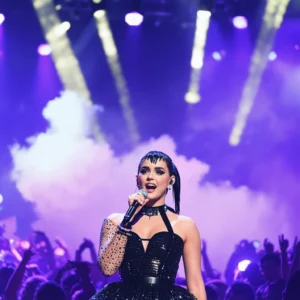
Introduction
The recent revelations made by actor-comedian Kevin Hart regarding his near-tragic experience while day drinking with host Seth Meyers has sparked significant conversation across both entertainment and business communities. During a “Day Drinking” segment on Late Night with Seth Meyers last year, Hart candidly described an incident that escalated to a point where his life felt imperiled. In this article, we examine the event in detail, analyze its implications on personal branding, and explore valuable lessons for risk management in high-profile occupations.
Event Analysis and Personal Reflection
Anatomy of a Risky Encounter
Kevin Hart’s admission that he “almost died” has positioned the event as a critical case study. The unfolding of this episode can be broken down into several key components:
- Spontaneous Decision-Making: The segment’s casual yet risky nature led to spontaneous choices that placed Hart in considerable danger.
- Peer Influence and Environment: The presence of industry peers and the lighthearted environment contributed to decisions that went beyond typical boundaries.
- Audience Reception: The narrative, when shared with a global audience, came to represent both a personal anecdote and a broader commentary on the risks of excessive alcohol consumption under public scrutiny.
This breakdown offers a window into the pressures of maintaining personal freedom versus managing public perceptions, particularly in a medium where entertainers push boundaries to capture attention.
Business Lessons Derived from the Incident
In an era where personal branding is paramount, incidents such as these have far-reaching implications beyond mere entertainment. Business professionals can extract several lessons from Hart’s experience:
- Risk Management: Analyzing high-risk decisions in a public setting encourages companies to adopt comprehensive risk assessment protocols, not only for their employees but also when engaging in public relations and marketing strategies.
- Reputation and Transparency: Both Hart and Seth Meyers demonstrated the power of acknowledgment. Acknowledging mistakes openly can fortify personal and corporate reputations, provided the narrative is managed responsibly.
- Strategic Branding Under Pressure: Balancing personal identity with public expectations is critical. Brands and celebrities alike must ensure that risky behavior does not undermine their credibility or market positioning.
Industry Implications and Risk Management
Risk Management in the Entertainment Sector
The entertainment industry frequently straddles the demand for spontaneity with the necessity of maintaining a controlled public image. The incident involving Kevin Hart underscores the following risk management points:
| Risk Factor | Potential Impact | Preventive Measures |
|---|---|---|
| Unplanned Alcohol Consumption | Compromised decision-making, reputational risk | Implement pre-event health assessments and set clear substance limits |
| Peer Pressure | Deviations from planned behavior | Training in personal accountability and establishing support systems |
| Media Exposure | Intensification of public scrutiny | Use of strategic communications and crisis management frameworks |
For companies and individuals alike, understanding these factors is essential to avoiding similar pitfalls while simultaneously capitalizing on moments of vulnerability to strengthen stakeholder trust.
Balancing Entertainment Value and Corporate Responsibility
Although day drinking segments and light-hearted content often attract substantial viewership, companies engaged with such content through sponsorships or partnerships must weigh the entertainment value against potential reputational risks. Key strategies include:
- Developing Protocols for On-Air Behavior: Establish guidelines that align with a company’s ethical standards while retaining the spontaneity often demanded by late-night entertainment.
- Engaging in Proactive Communication: Prepare messaging that can be deployed immediately in case of controversies to mitigate damage.
- Collaborative Oversight: Work closely with creative teams to ensure that public engagements remain within safe boundaries without compromising artistic integrity.
Such measures provide a structured approach to balancing risk and reward, ensuring that entertainment remains engaging while protecting long-term brand equity.
Cultural and Social Considerations
The Role of Celebrity Narratives in Shaping Public Perception
Celebrity narratives have an unparalleled ability to shape cultural discourse. When a respected figure such as Kevin Hart shares an experience that borders on crisis, it resonates with audiences on various levels. The cultural implications include:
- Encouraging Open Dialogue: Hart’s openness forces discussions about the normalization of risky behaviors and how society can better support those in high-pressure public roles.
- Influence on Social Norms: The media’s reiteration of the incident can lead to more cautious behaviors among fans and other public figures, transforming public norms regarding alcohol consumption during high-profile events.
- Inspiring Policy Reevaluations: The broader corporate sector may consider revisiting policies related to employee behavior during social events, thereby fostering environments that prioritize personal safety and accountability.
Integrating Learnings into Corporate Culture
The key takeaway for businesses is the need to integrate the lessons from such high-profile incidents into corporate governance and culture. The following guidelines can help organizations internalize these lessons:
- Policy Development: Craft detailed codes of conduct for both internal affairs and in public engagements to prevent similar incidents.
- Employee Training: Regularly conduct training sessions focused on risk management and crisis communication, ensuring that employees at all levels understand the importance of accountability.
- Stakeholder Engagement: Develop clear communication strategies that involve stakeholders in discussions on risk and reputation management, thereby fostering an inclusive and proactive corporate culture.
This strategic integration not only enhances an organization’s credibility but also ensures that such high-risk incidents are managed effectively in the future. The balance between creative freedom and corporate responsibility is delicate, yet it is one that holds significant potential for fostering long-term growth and resilience.
Conclusion
The Intersection of Celebrity Culture and Corporate Strategy
Kevin Hart’s near-death experience during the day drinking segment on Late Night with Seth Meyers has transcended mere celebrity gossip; it has catalyzed an important discussion at the intersection of entertainment, personal branding, and corporate risk management. In an age where media narratives rapidly impact consumer perception and corporate strategy, the incident serves as a landmark event for:
- Identifying new risk vectors in high-visibility environments,
- Enhancing the robustness of corporate communication plans, and
- Reassessing the cultural implications of celebrity behavior.
Businesses can learn much from this episode by adopting stringent risk management protocols, ensuring transparency, and driving a culture that values safety over fleeting trends. In doing so, not only do they safeguard their reputation, but they also contribute to a broader societal framework in which accountability and measured decision-making prevail. The journey from the chaos of a spontaneous act to the establishment of proactive measures illustrates the crucial role that communication and corporate governance play in our dynamic, media-driven world.




